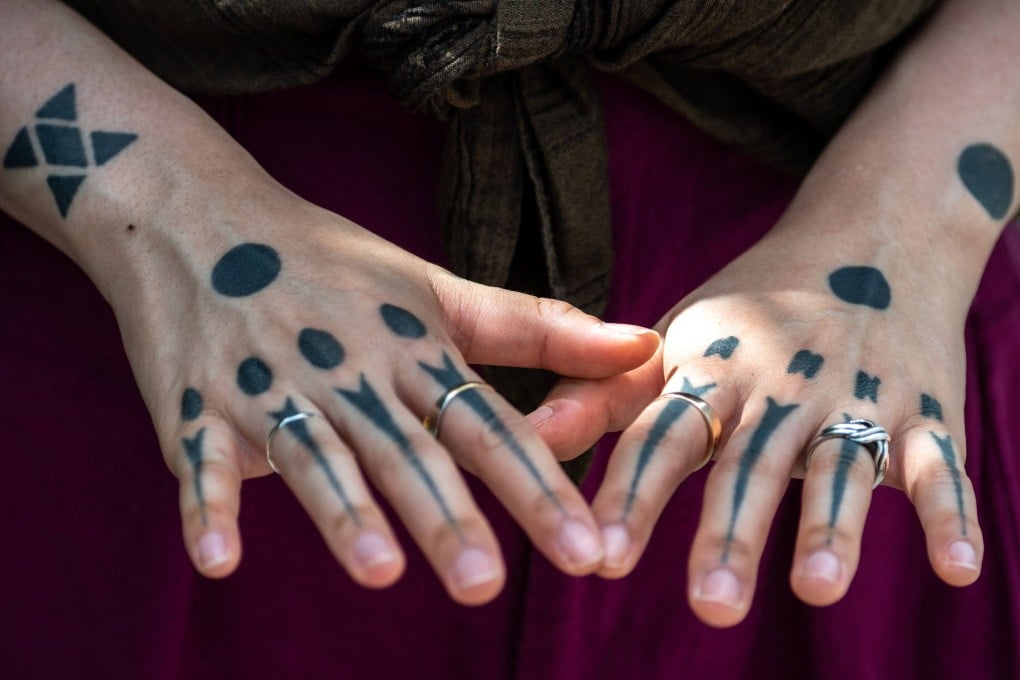Advertisement
‘Completely different from tattoos’: how body art indigenous to Okinawa, Japan, is being revived for a new generation as a way to ‘retain the culture’
- Hajichi, hand-poked markings worn by women, is a traditional part of Ryukyu culture once banned in Japan; the practice had all but disappeared until recently
- Now tattoo artist Moeko Heshiki is reviving the body art, inking those with Okinawan roots but conscious of the need to avoid it being reduced to a fad
Reading Time:2 minutes
Why you can trust SCMP
0

Moeko Heshiki is no ordinary tattoo artist: she is one of the few people keeping the once-banned tradition of hajichi body art alive for the indigenous Ryukyu people of Japan’s Okinawa region.
The traditionally hand-poked markings were once common on women of the Ryukyu, who lived throughout the southern islands of what is now Japan.
The monochrome patterns, ranging from delicate arrow-like symbols to arrays of large dots, marked important moments in a woman’s life and, in some cases, were believed to ensure passage to heaven.
When Japan annexed the Okinawa island chain in 1879, however, a process of forced assimilation set the hajichi tradition on the path to extinction.

In mainland Japan, tattoos were associated with illegal behaviour, because criminals were sometimes tattooed by authorities to mark them out.
Advertisement
Select Voice
Choose your listening speed
Get through articles 2-3x faster
1.1x
220 WPM
Slow
Normal
Fast
1.1x